Today we are going to be creating a very dark rhythm pattern with the standard drum rack 909 Core Kit. You will be able to just edit it step by step following the indications after loading the kit in a current version of Ableton Live, without the need to look for other specific samples.
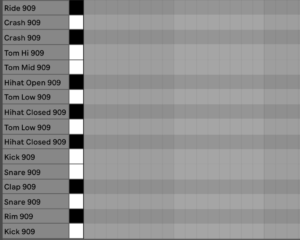
When loading the 909 Core Kit you have the following order of samples in the piano roll.
The fact that you have different sounds repeated will give you the chance to have handful variations of it.
If you were to need more sounds you can always add them in the rest of available pads of the drum rack. However in the following pattern we are just going to be using the default order and sounds appearing when you load the 909 Core Kit. If you want to expand your kick drums library with Chris Liebing’s personal kick drum sounds well-known for their clarity and punchiness, check out the benefits of Aulart Membership
Step 1
Add a kick in a 4×4 pattern at 130 BPMs:
We are going to adjust the sound of the kick to make it sound lower than the default one. Turn it -11st. Adjust the filter to make it sound even lower. Whenever you are using a filter in Ableton, you can try different analog options instead of the clean one (OSR, MS2, SMP, PRD) to choose the one you prefer.
We are slightly changing the envelope too, although you can adjust it to your taste as long as it remains a quite clean sound:

Leave room in the lowest frequencies for the second kick:
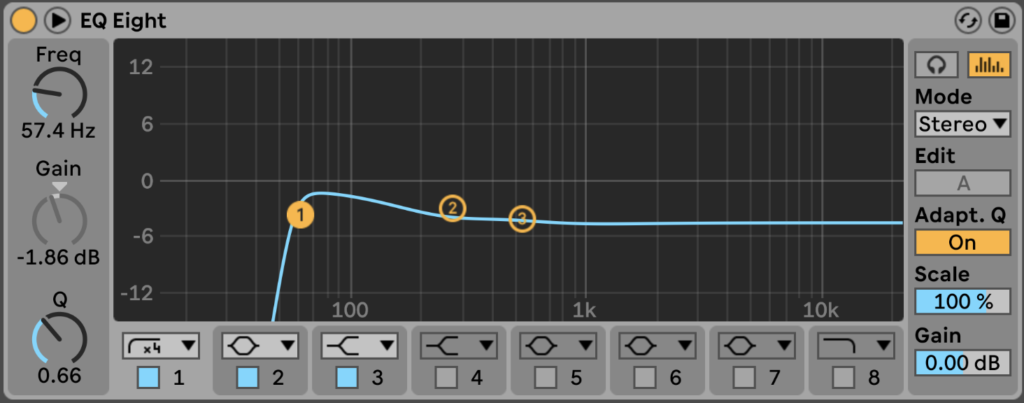
Step 2
Add a second kick. This one will give the low-rumble characteristic of the dark techno flavour. To see how professionals create their techno drum patterns check out Carl Craig or Regal do this to perfection.
Transpose it too to -11st, so both kicks are tuned the same, and add more attack and release. You will be able to work the rumble characteristic by adjusting the reverb. Be careful because much reverb will wash your pattern too much:
This combination of analog filter plus EQ will give you the midrange push touch:
Step 3
It’s time to add an offbeat hi-hat. We are going to make it darker and softer than the default one by setting the low pass filter and adjusting its envelope:

Step 4
To add variation, we are going to use the other hi-hat closed we have in the default rack and adjust it differently from the other one so they complement each other.
In this case we are going to let it sound higher than the previous hi-hat closed so it sticks out. Also, we will use a high filter since we are adding it some reverb and we do not want too much hi-hat low rumble.

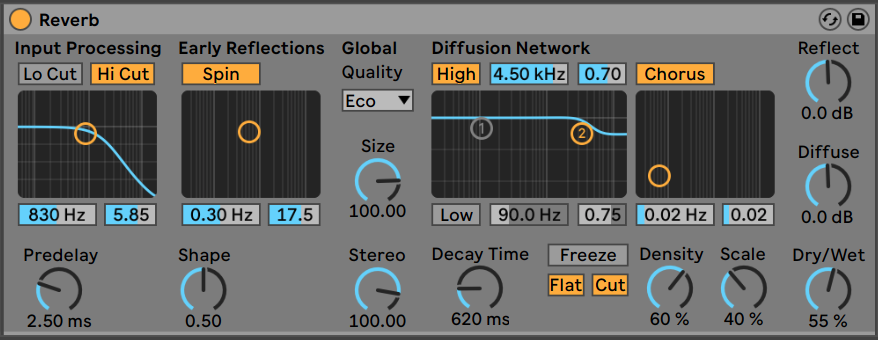
Step 5
Now we are going to add an open hi-hat that gives more life to our rhythm, but we are going to shape it shorter and EQ it thinner than it is by default.

Keep in mind that all the reverb adjustments we are suggesting are subjective and will also depend on the rest of your instruments in the track and on the presence you want the drums to have in certain moments of the song.
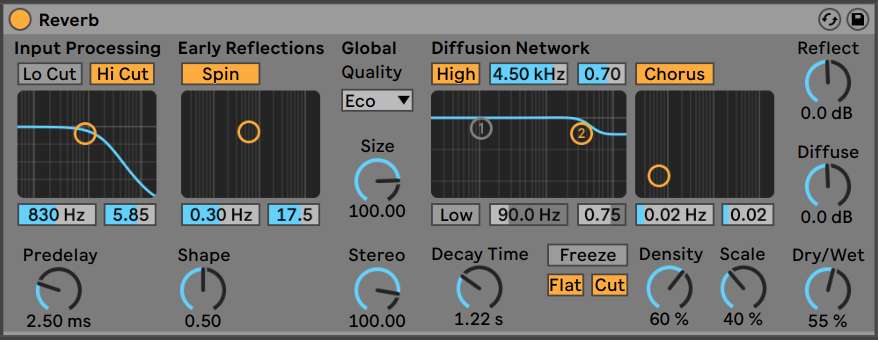
Step 6
We are going to add more depth to our hi-hat section and since we do not have more pads of the kind in the default kit, we are going to use one of our crashes. For it to have the sound we want, we will set it with a short release and will quite filter it.

Step 7
To finish, we will add a ride to give character to the pattern. Adding and removing it during different parts of your song will give a lot of variation to your arrangement.

Now that we have shown the pattern and basic design tips for the sounds of the default 909 core kit, so everybody could follow the tutorial, it is up to you to vary it as you like and replace or add other drum samples you like better.
Mixing your drum kit
You can mix all the elements of your drum kit separately, which is really advisable to have a better control of the sounds. Or you can also do a bit of group process to make all the sounds tighter. The Drum Buss by Ableton will add that body and attitude that you need for you drum pattern.
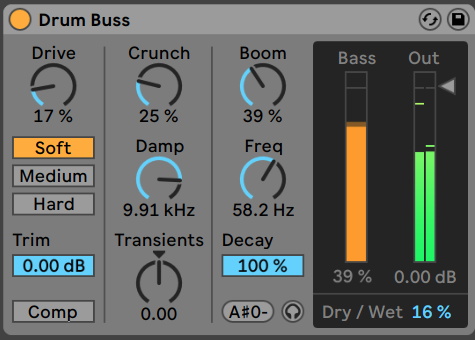
Adding other elements
Some suggestions as a starting point for your arrangement are adding an offbeat bass to complement the low-end, and adding some interesting noises that attract the attention of the listener among all the overall rumble. Listen to an example we created:
Remember to tune your kick and bass so they are in the same key, or the rumble could end up being annoying.








 50 Industry Music Production Tips You Must Know
50 Industry Music Production Tips You Must Know




